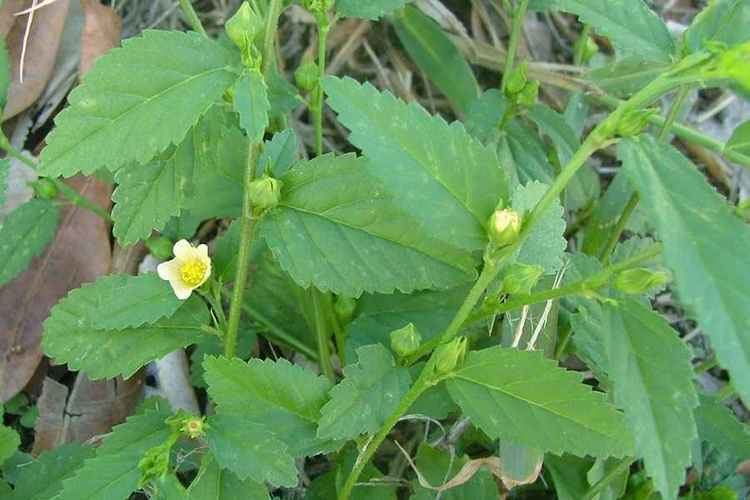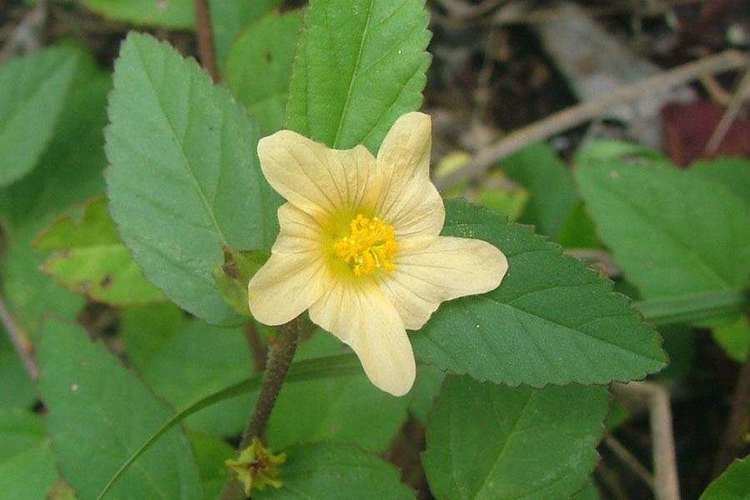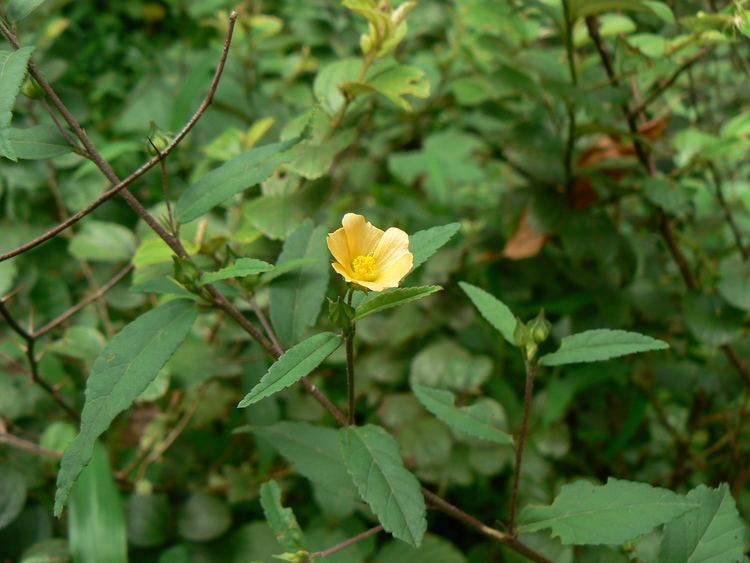Rank Species | Genus Sida Higher classification Sida | |
 | ||
Similar Sida, Mallows, Sida rhombifolia, Sida cordifolia, Urena lobata | ||
Herbal medicine sida acuta natural remedy for arthritis
Sida acuta, the common wireweed, is a species of flowering plant in the mallow family, Malvaceae. It is believed to have originated in Central America, but today has a pantropical distribution and is considered a weed in some areas.
Contents
- Herbal medicine sida acuta natural remedy for arthritis
- Octonary ingredients of sida acuta formulations pankaj oudhia s medicinal plant database
- Description
- References
In northern Australia, Sida acuta is considered an invasive species, and the beetle Calligrapha pantherina has been introduced as a biological control agent in an attempt to control the plant.

Octonary ingredients of sida acuta formulations pankaj oudhia s medicinal plant database
Description
Plant- Undershrub, with mucilagenous juice, aerial, erect, cylindrical, branched, solid, green.

Leaves- Alternate, simple, lanceolate to linear, rarely ovate to oblong, obtuse at the base, acute at the apex, coarsely and remotely serrate; petiole much shorter than the blade; stipulate, stipules free-lateral, unequally paired at the node, reticulate venation.
Inflorescence- Cymose
Flower- Small, axillary, 2-3 in a cluster; pedicels jointed at the middle, epicalyx absent, complete,
bisexual, regular, actinomorphic, hypogynus, pentamerous, yellow.
Calyx- Sepals 5, gamosepalous, campanulate, slightly accrescent, persistent, valvate.
Corolla- Petals 5, polypetalous but slightly connate below and jointed with the staminal column,twisted.

Androecium- Stamens many,monadelphous, arranged on the staminal column; staminal column is shorter than the petals,divided above into numerous filaments, anthers monothecus, reniform, basifixed, filament short, extrorse.
Gynoecium- Carples 5, syncarpous, ovary superior,penta or multilocular with axile placentation, one ovule in each locule; style 1, passing through the staminal tube; stigma globular,correspond to the number of carples.
Fruit- A schizocarpic mericarp, seed 1 in each mericarp.
Classification and Identification(Bentham and Hooker's system)-
Class- Dicotyledonae
I) Reticulate venation.
II) Flower pentamerous.
Sub Class- Polypetalae
I) Petals free.
Series- Thalamiflorae.
I) Flower hypogynus; ovary superior.
Order- Malvales
I) Stamens indefinite, monadelphous.
II) Ovary 5 carpellary, placentation axile.
Family- Malvaceae
I) Plant- Mucilagenous.
II) Leaves- Simple with free lateral stipule.
III) Flower- Bisexual,; petals 5, twisted; monadelphous stamen, anther one celled, reniformed.
Genus- Sida
I) Staminal column without teeth at apex.
II) Flowers without epicalyx.
III) Ovule 1 in each locule; seed 1 in each mericarp.
Species- S.acuta
I) Leaf base obtuse, apex acute.
Vernacular name[6]-
Sanskrit- Bala; Bengali- Kureta/ Berela[7](in Tripura) ; Hindi- Kareta/ Kharenti ; Oriya- Siobala ; Gujrati- Bala/ Jangli menthi ; Marathi- Chikana ; Malayalam- Malatanni ; Tamil- Malaidangi ; Telegu- Nelabenda ; Kannada- Vishakaddi ; Sinhala- Gasbevila ; Burmese- Katsayna ; Yoruba-Ìsékètu.
